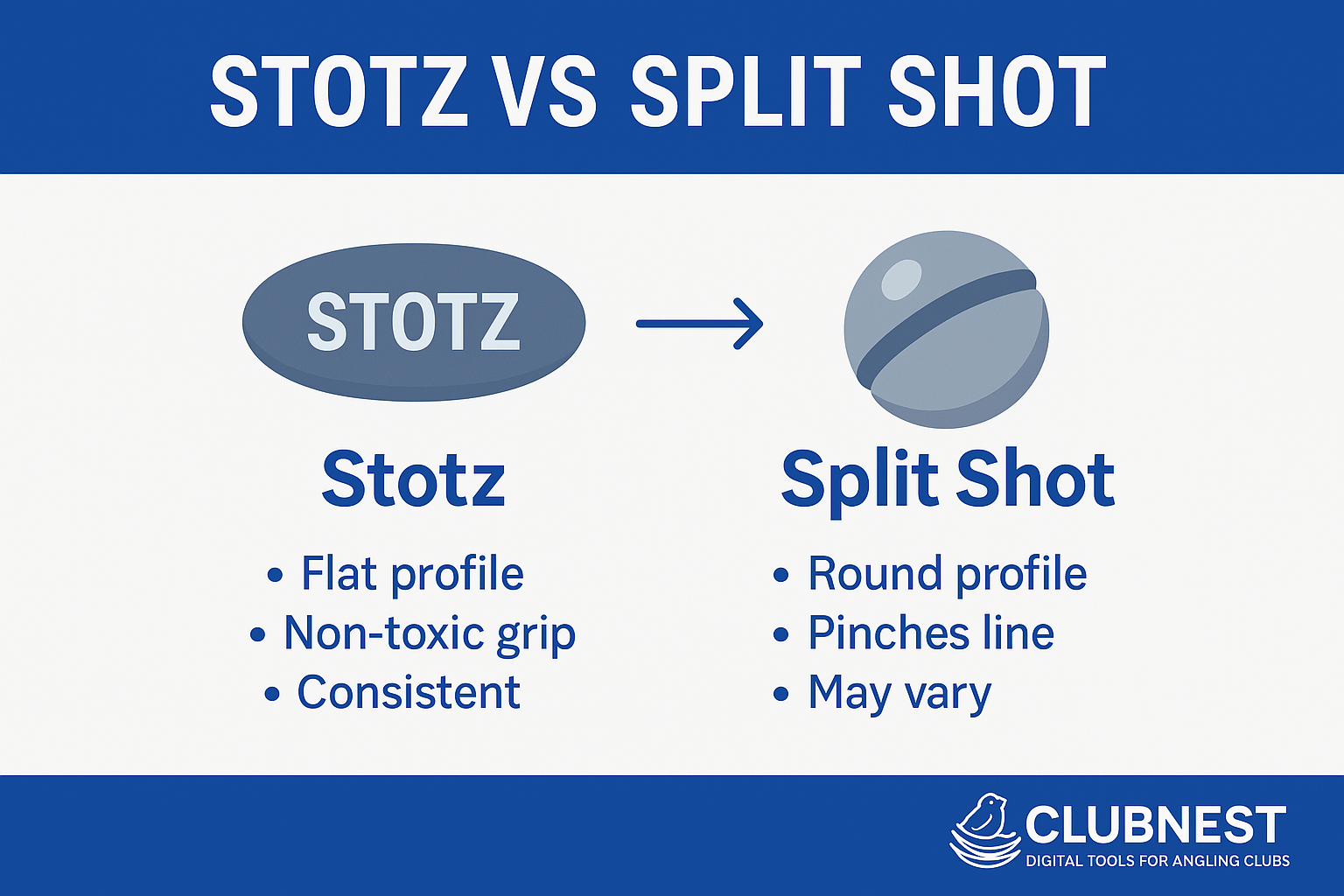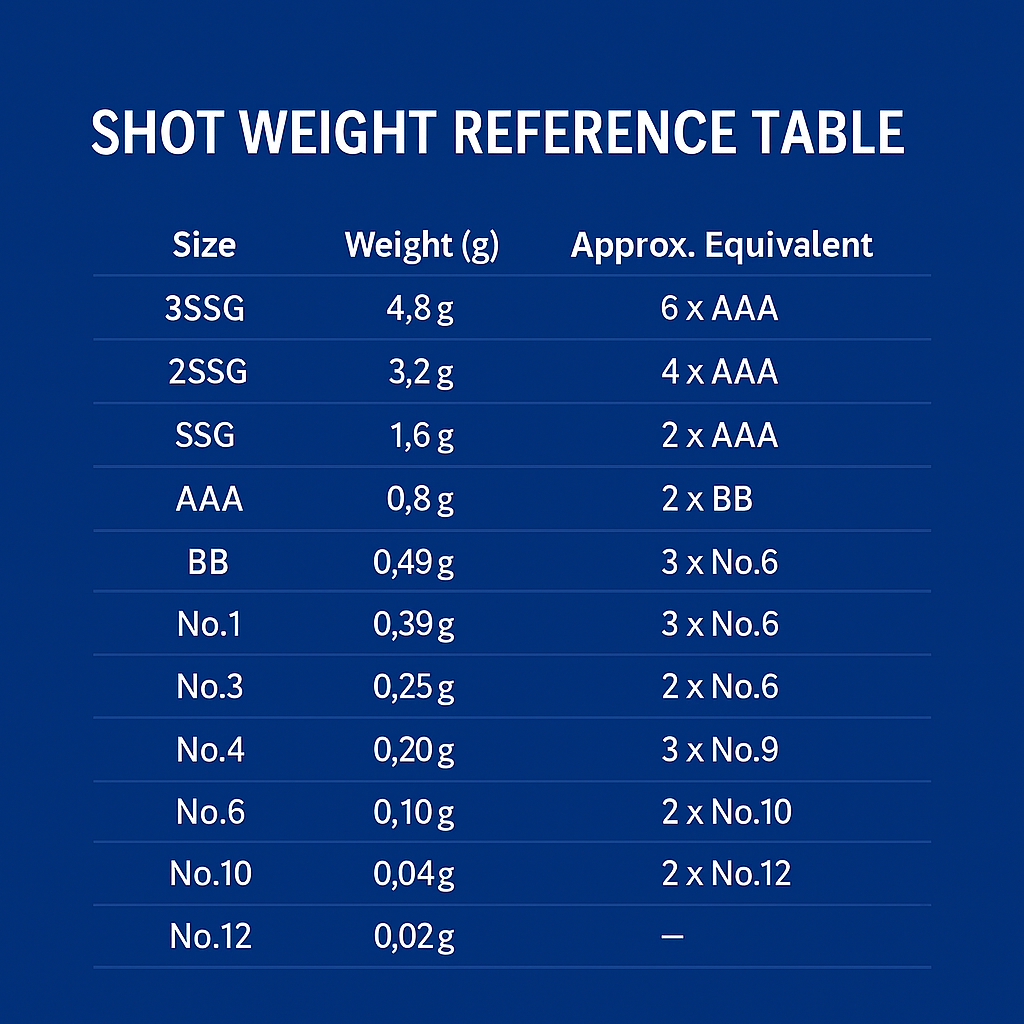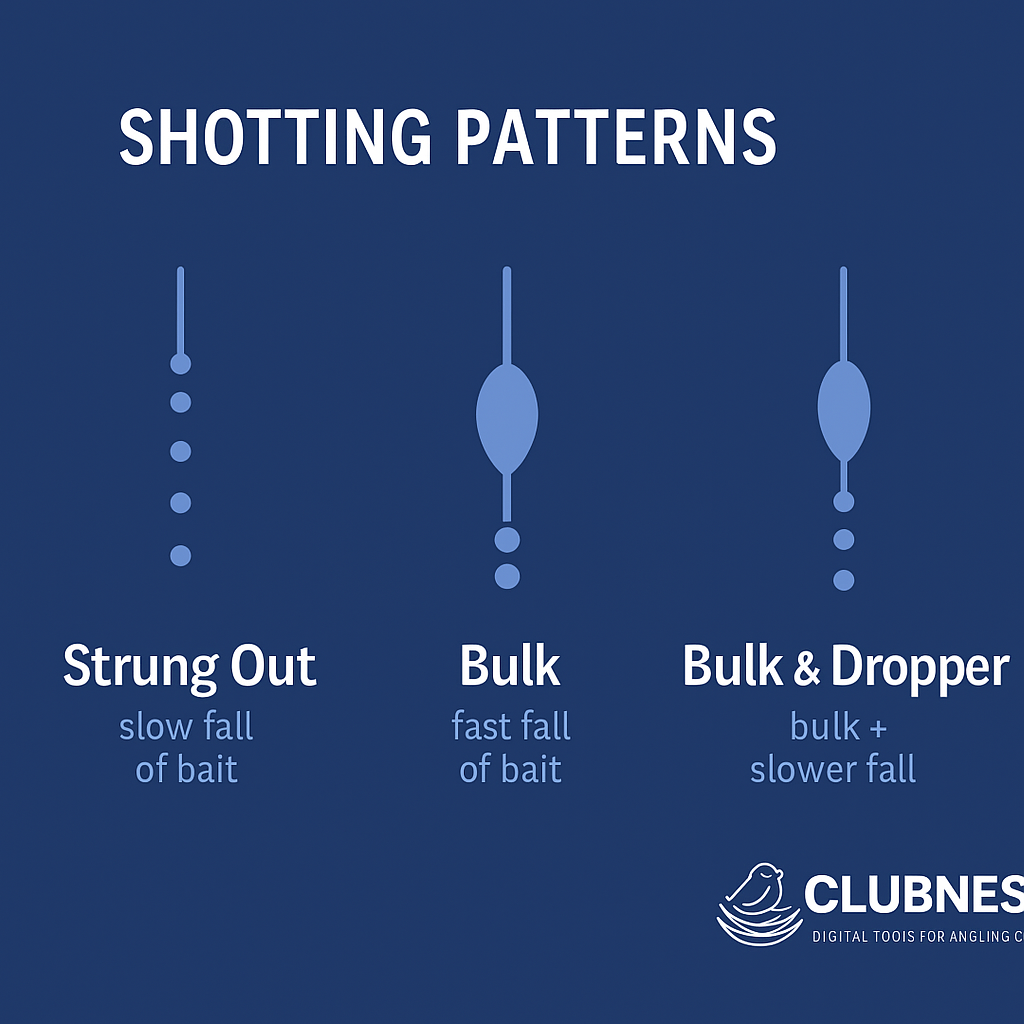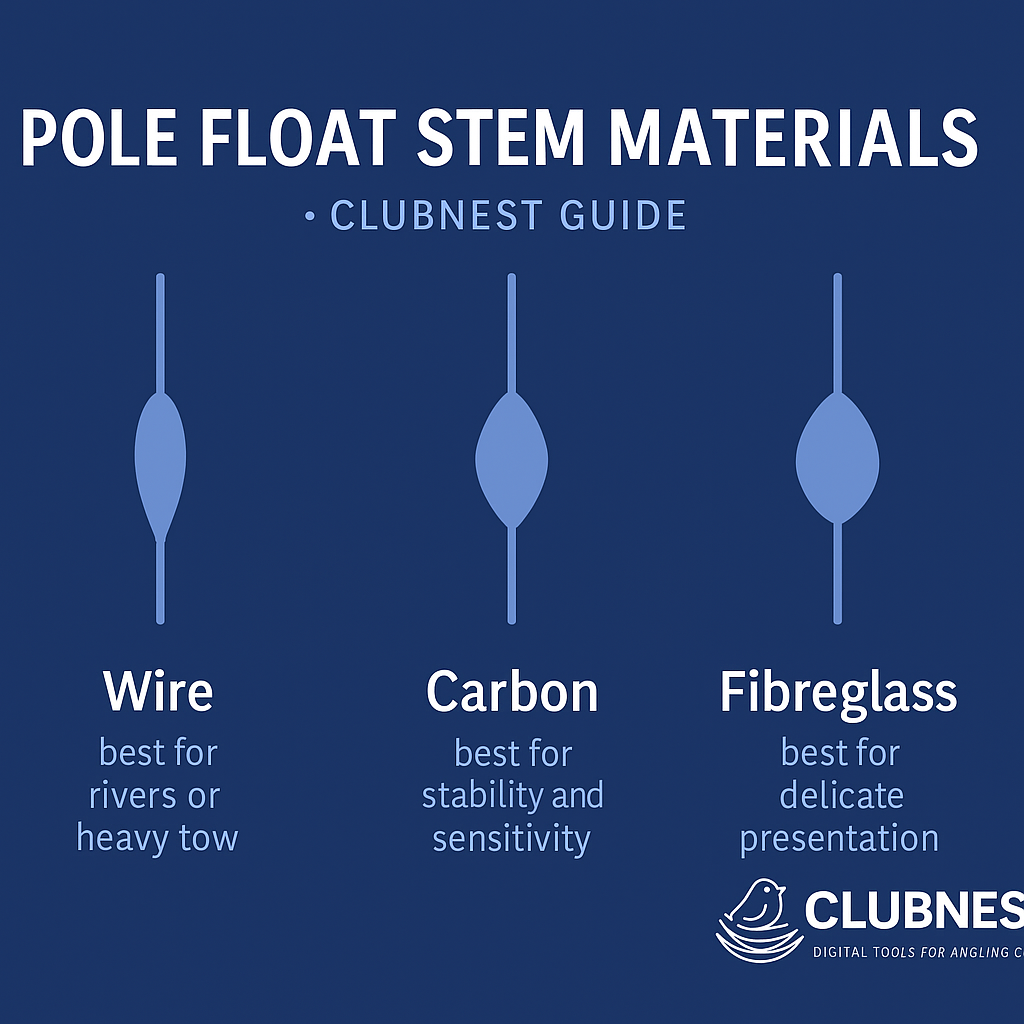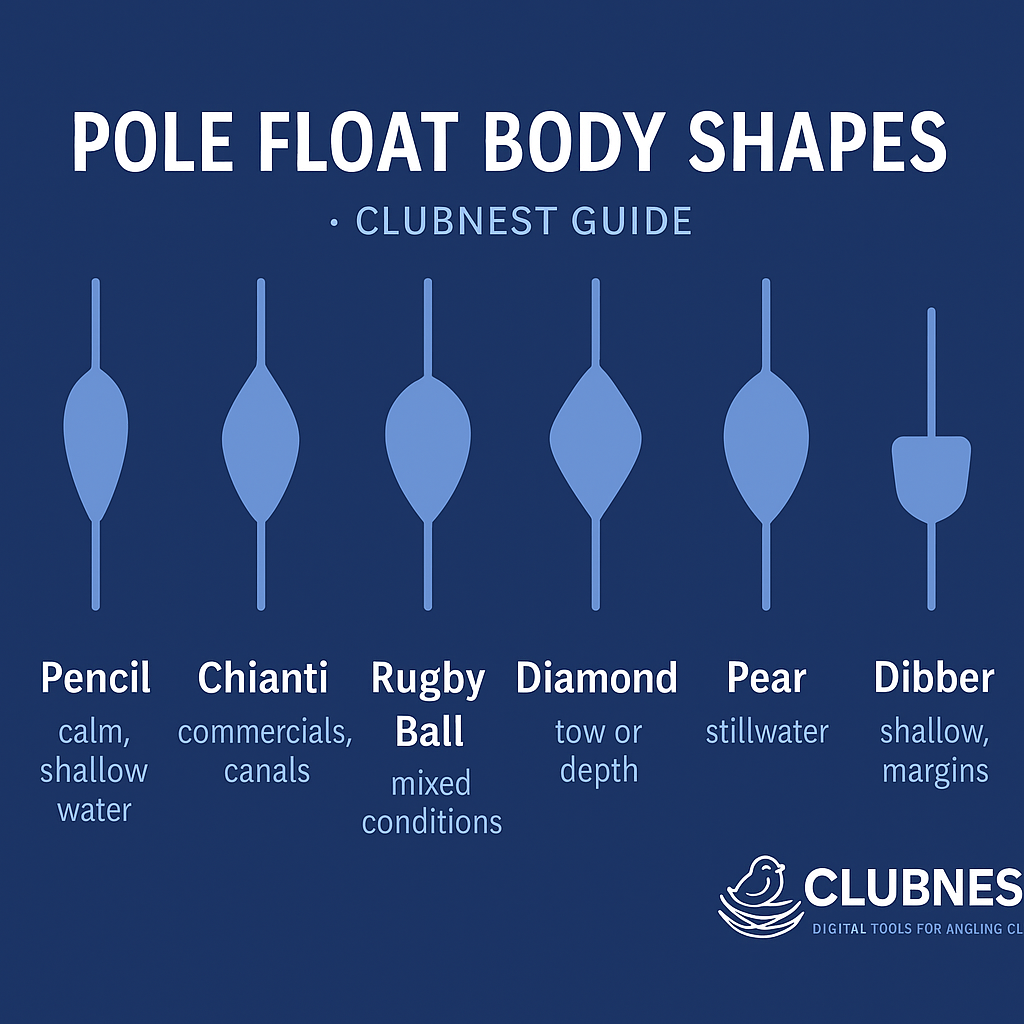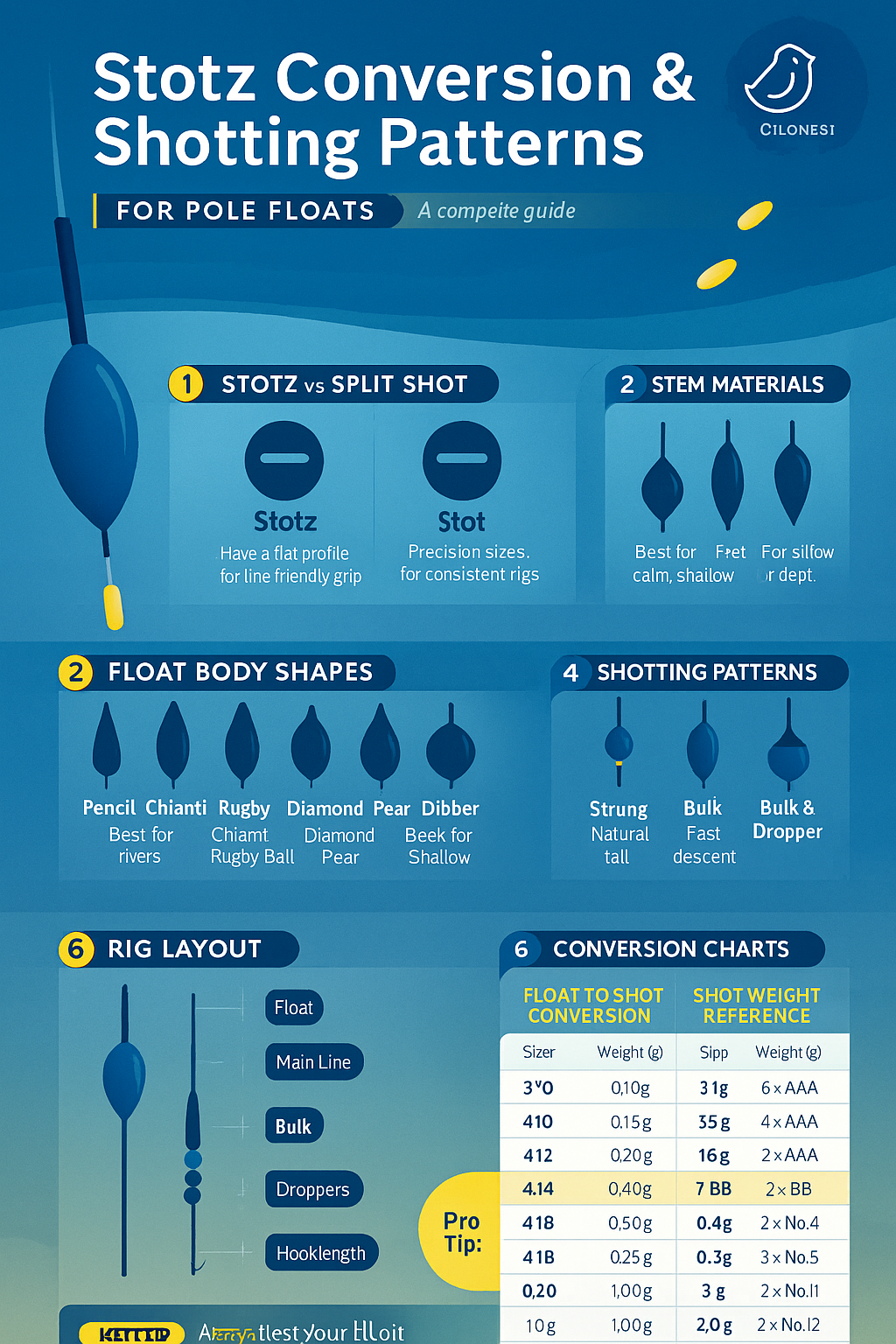Introduction
Pole fishing is all about balance and presentation. Getting your float perfectly shotted is the difference between a confident bite and a missed opportunity. This guide explains everything you need to know about Stotz conversions, shotting patterns, and float design — helping you create rigs that perform flawlessly in any venue or condition.
You’ll learn when to use bulk, strung, or combination shotting; how different float bodies and stems behave; and how to choose the perfect setup for canals, commercials, and rivers. Whether you’re a beginner learning the basics or an experienced match angler fine-tuning your rigs, this guide will give you a reliable reference for every situation.
Understanding Shotting and Stotz
When you’re pole fishing, the way you distribute weight along your line controls how the bait behaves. Each shot or Stotz added to your rig changes how fast your float settles, how naturally your bait falls, and how sensitive your rig becomes to tiny bites.
Stotz are modern, precision-cut alternatives to traditional split shot. They’re flatter, grip line more securely, and can be moved without damaging your rig. Designed primarily for pole fishing, they make consistent rigs easier to tie and adjust.
Stotz vs Traditional Split Shot
Feature | Stotz | Traditional Split Shot Shape | Flat-sided oval | Round or pear-shaped Line Grip | Non-slip, gentle on line | Can pinch or weaken line Consistency | Uniform weight | Slight variation between sizes Ease of Use | Opens & closes easily | Requires pliers or force Best Use | Pole rigs, soft lines | Heavier running line rigs
Stotz are especially useful with today’s fine diameters — 0.08–0.14mm — because they hold position securely without flattening the line.
Float to Shot Conversion Chart
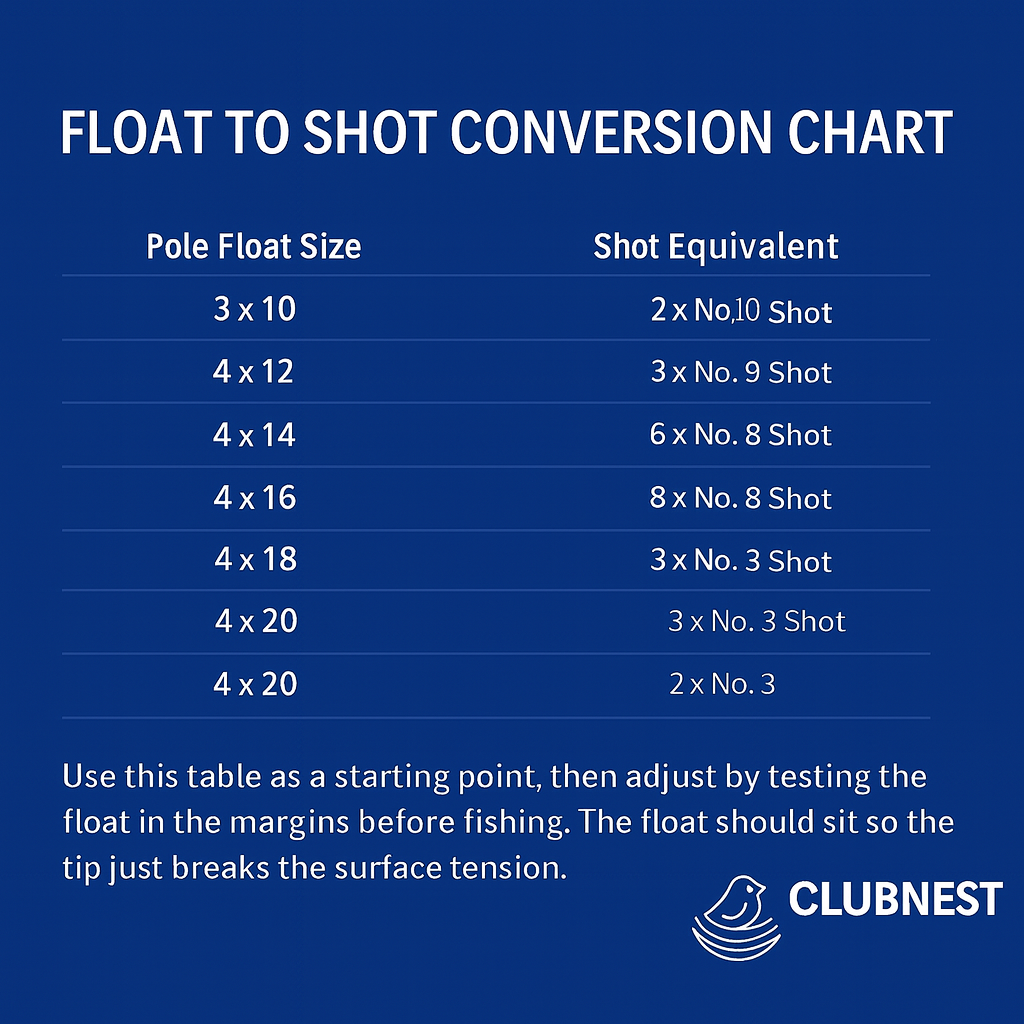
Pole Float Size | Weight | Shot Equivalent 3×10 | 0.10g | 2 × No.10 4×10 | 0.15g | 3 × No.10 4×12 | 0.20g | 5 × No.10 4×14 | 0.40g | 6 × No.8 4×16 | 0.50g | 8 × No.8 4×18 | 0.75g | 3 × No.3 4×20 | 1.00g | 4 × No.3
Use this table as a starting point, then adjust by testing the float in the margins before fishing. The float should sit so the tip just breaks the surface tension.
Shot Weight Reference Table
Size | Weight (g) | Approx. Equivalent 3SSG | 4.8g | 6 × AAA 2SSG | 3.2g | 4 × AAA SSG | 1.6g | 2 × AAA AAA | 0.8g | 2 × BB BB | 0.49g | 2 × No.4 No.1 | 0.39g | 3 × No.6 No.3 | 0.25g | 2 × No.6 No.4 | 0.20g | 3 × No.9 No.6 | 0.10g | 2 × No.10 No.8 | 0.06g | 2 × No.11 No.10 | 0.04g | 2 × No.12 No.12 | 0.02g | —
Common Shotting Patterns
Strung-Out Shotting
- How it looks: small Stotz evenly spaced along the main line.
- Purpose: creates a slow, natural fall through the water.
- Best for: shy fish, clear water, winter or shallow canals.
- Species: roach, rudd, skimmers, small F1s.
Bulk Shotting
- How it looks: the majority of weight grouped 6–12 inches above the hooklength.
- Purpose: gets bait down fast and stabilises presentation.
- Best for: deeper pegs, rivers, windy conditions.
- Species: bream, carp, tench.
Bulk & Dropper Combination
- How it looks: one bulk cluster plus one or two droppers below.
- Purpose: mixes quick descent with controlled final fall.
- Best for: commercials or deeper stillwaters.
- Tip: use No.10 or No.11 droppers spaced 4–6 inches apart.
Example Setups
Float | Pattern | Example Setup 4×10 | Strung | 4 × No.10 evenly spaced 4×14 | Bulk + 2 Droppers | Bulk 4 × No.8 + 2 × No.10 droppers 4×16 | Bulk | 6 × No.8 grouped 12" above hooklength 4×18 | Bulk + Dropper | 4 × No.6 bulk + 1 × No.10 dropper 4×20 | Heavy Bulk | 4 × No.4 10" above hooklength
Understanding Pole Float Construction
Pole floats come in a huge range of shapes and materials. Each design changes how your rig behaves in wind, tow, and depth.
Float Stems
Stem Type | Material | Use | Characteristics Carbon | Graphite fibre | Slow fall, delicate rigs | Light, neutrally buoyant, follows bait naturally Wire | Stainless steel | Windy or deep venues | Heavy, resists tow, keeps float stable Fibreglass | Composite glass | All-round commercial use | Balanced between stability and finesse
Float Bodies
Shape | Description | Best Used For Pencil | Long and slim | Calm, shallow water, delicate bites Rugby Ball | Rounded with tapered ends | Versatile, steady presentation Diamond | Wider shoulders | Deep water, medium flow Pear | Smooth teardrop | Stillwaters and commercials Dibber | Short and stubby | Margins, shallow pellet fishing
Full Pole Rig Layout
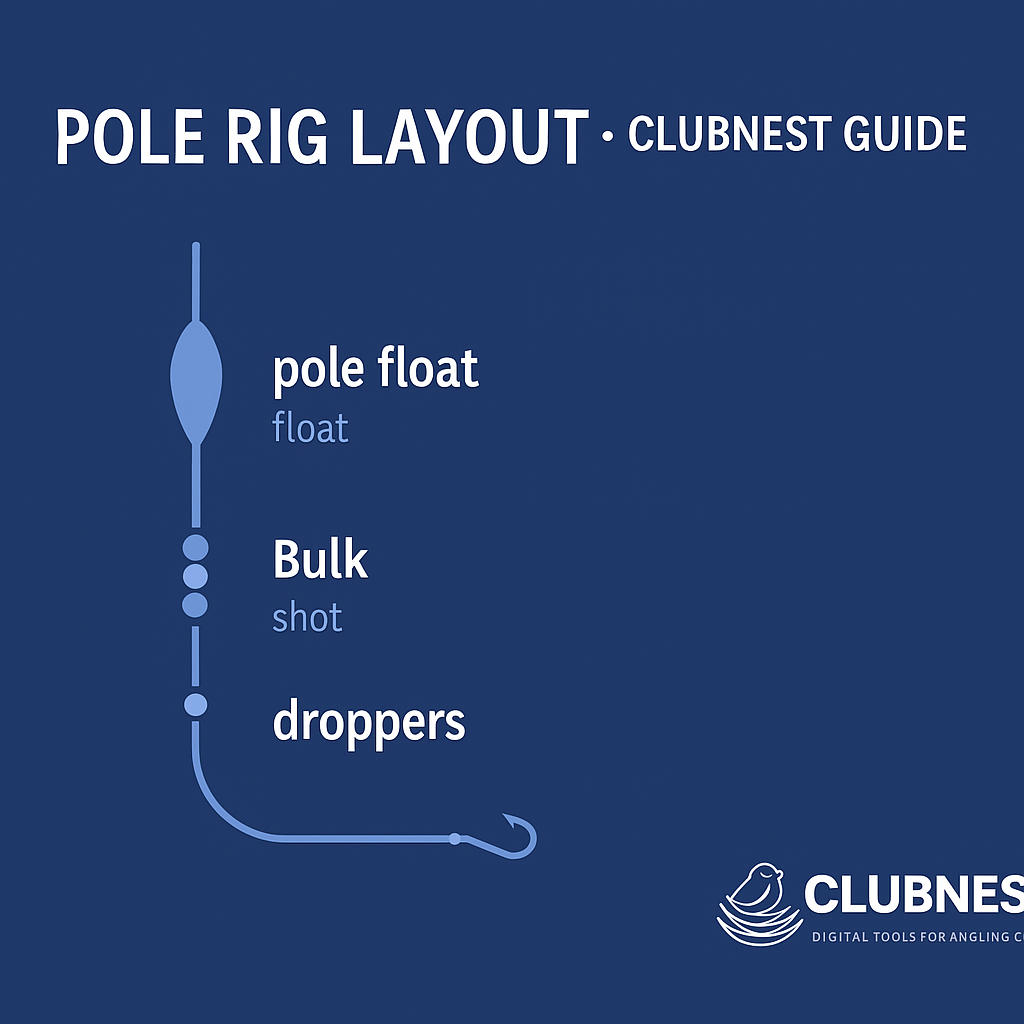
- Pole float matched to depth and bait size
- Main line (e.g. 0.13mm)
- Bulk shot or Stotz cluster 12–18" from hooklength
- Droppers spaced 4–6" apart below the bulk
- Hooklength (0.10–0.12mm) around 6–10" long
- Hook matched to bait size (size 18–14 for most coarse fishing)
When and Why to Change Your Shotting Pattern
Situation | Best Pattern | Why Fish feeding mid-water | Strung-out | Slower fall keeps bait in strike zone Fish hugging the bottom | Bulk | Gets bait down quickly and stable Cold water / winter | Bulk + Dropper | Slower final fall for shy bites Deep venues | Bulk | Rapid descent to feeding depth Wind or tow | Bulk + Wire stem | Cuts through surface drift Shallow margins | Bulk short line | Holds bait tight to feature
Stotz Conversion Quick Reference
Float Size | Equivalent Stotz 4×10 | 3 × No.10 Stotz 4×12 | 5 × No.10 Stotz 4×14 | 6 × No.8 Stotz 4×16 | 8 × No.8 Stotz 4×18 | 3 × No.6 Stotz 4×20 | 4 × No.6 Stotz
Key Takeaways
- Use Stotz for consistent, line-friendly weight placement.
- Match float size to water depth and conditions.
- Choose stem material for stability vs finesse.
- Bulk when you need speed and stability; strung-out for natural fall.
- Always plumb depth and test your float before fishing.
Summary
Perfect float presentation isn’t about guesswork — it’s about balance. Understanding Stotz sizes, shot weights, and float materials lets you tailor every rig to the conditions in front of you.
With the charts, diagrams, and quick references in this guide, you can confidently adjust your setup to suit depth, tow, temperature, and target species — ensuring that every bite registers cleanly and every cast is under control.
